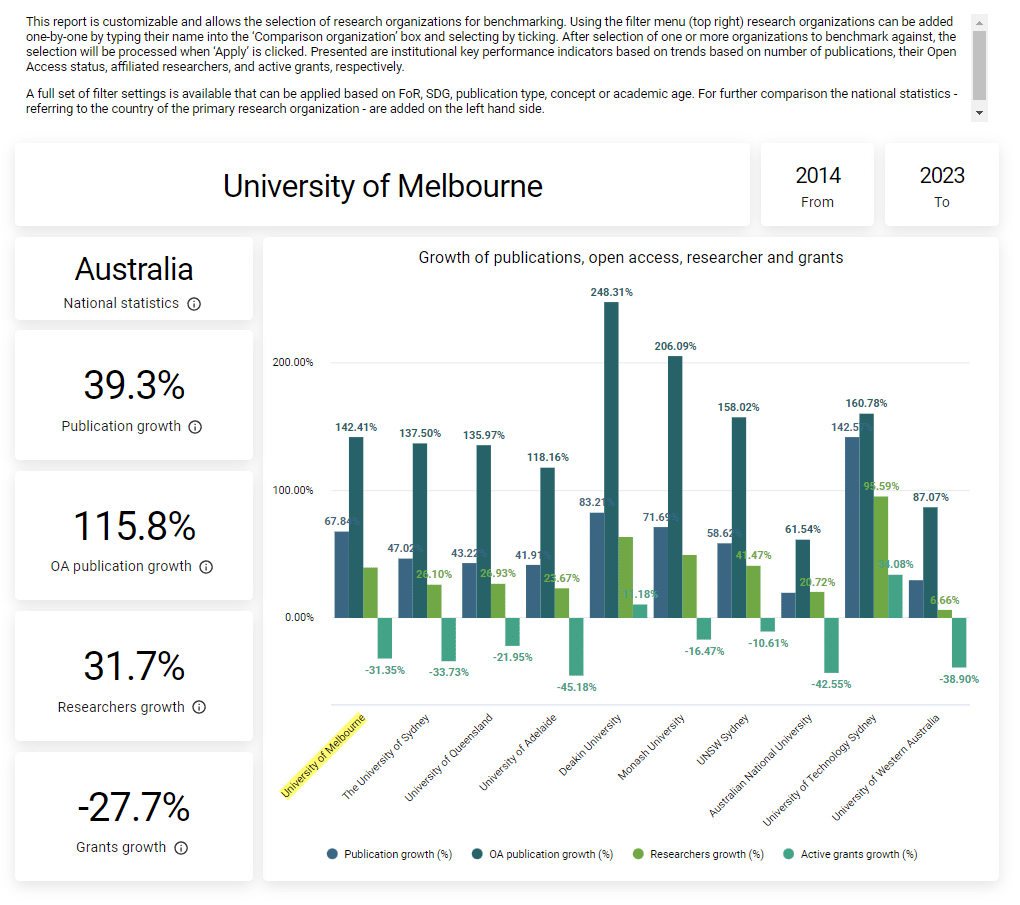
How to… maximize your research strategy
Meet the challenges of information overload
One of the ironies of modern universities is that they suffer from the one thing that in the past was always lacking. Data – in the form of journal articles and books, citations and downloads, spreadsheets and databases – have always been the holy grails for institutions seeking to collect as many information sources as possible to feed their voracious researchers. But now data is available in abundance, they face new challenges in order for them research strategies to be properly supported: how to find the right data sources, identify what they need from it, and understand its relevance.
Looking out… and in
Understanding the nature of these challenges can only be developed by looking both outwards at the research landscape, and also inwards at an institution’s own capabilities and achievements. With over 145 million publications, 160 million patents and seven million grants, Dimensions can be the perfect place to start this process. Its wide range of filters and linked database can help research managers see their institutions’ strengths and opportunities. For example, Dimensions Perspectives & Insights can:
- Identify your organization’s specific strengths
- Scan your research ecosystem for potential risks, and spot any pockets of non-compliance
- Win more funding for your organization
- Find new collaborators with complementary areas of expertise
- Help you hire and retain the best talent
- Communicate the value of your organization’s research portfolio.

For a global perspective, Dimensions Perspectives & Insights delivers comprehensive insights for your benchmarking exercises to support strategy development, how impact is assessed at your institution or where collaboration with other universities might be beneficial. This can enable a speedy transition to internal competencies and how they match up with target institutions.
Looking more inwardly, Symplectic Elements is the ideal solution for curating all the required information in a single hub to allow assessment of details such as publications, grants, contracts and professional services. In turn, this shows how any strategic direction can be reached, starting with a full appraisal of past and existing research outputs and how they are trending into the future.
Building funding opportunities – along with reputation
For many Research Leaders understanding the wider impact of their research is mission critical to securing research funding in the future – especially if this impact is outside the confines of traditional outputs such as books and journals.
In addition to the well-known metrics around these outputs, many universities also need to see patent applications that have been made, clinical trials researchers have been involved in, as well as work that has been referenced in policy documents or appeared in reports from major global bodies.
These can be identified with the help of Dimensions Perspectives & Insights.
So, despite the increasing waves of information hitting our devices every day, there are some ways to understand what is most relevant to developing institutional strategy. With the right tools and data, the wood from the trees and view a path of where to go next.



